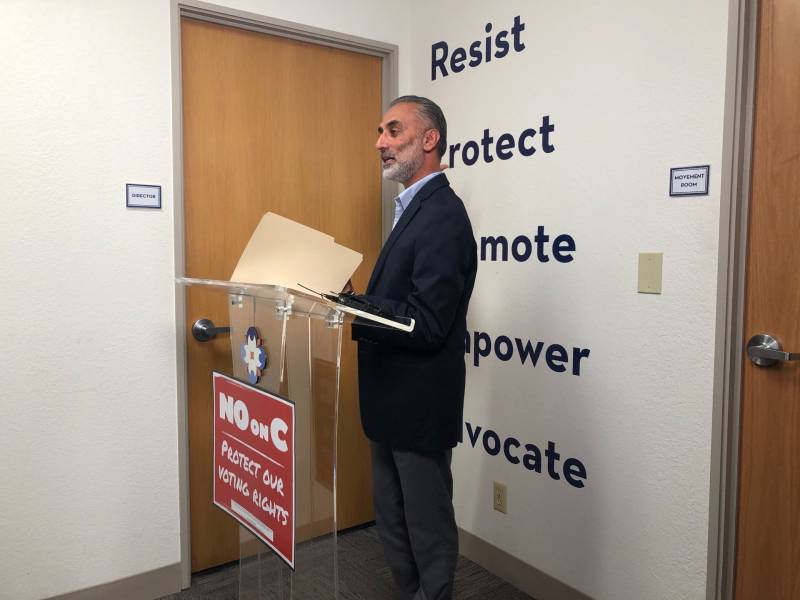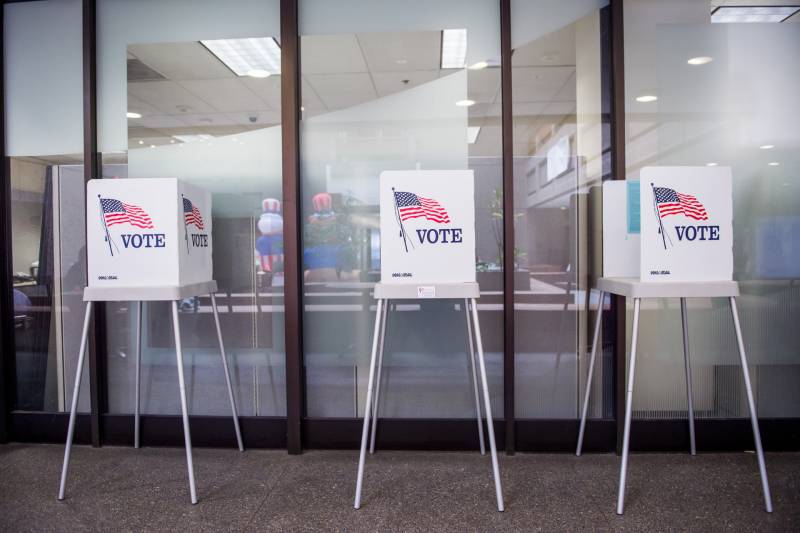Santa Clara voters are renewing debate over the city’s council district lines.
On March 3, residents will choose between voting for council members in six districts or three districts. Measure C has divided city leaders and caught the attention of the city’s most famous occupant — the 49ers.
First Asian American Elected on the Santa Clara City Council
Historically, Santa Clara has chosen its City Council through an “at-large” system, in which voters picked six council members to represent the whole city. In recent years, Santa Clara’s minority population (especially from Asian American communities) has grown, but its City Council has remained predominantly white.
That changed in 2018, after a legal complaint was filed against the city for its voting system, one of dozens of challenges to at-large elections across the state.
Santa Clara County Superior Court Judge Thomas E. Kuhnle found that the city’s at-large voting system diluted Asian votes and therefore violated the California Voting Rights Act. In a court order, he ruled the city must be divided into six districts, where each City Council member would represent an individual district. In November 2018, Raj Chahal won the District 2 seat.
“I think I’m the first Asian American, Indian Sikh on the council ever,” Chahal said.

Chahal believes splitting the city into six districts allowed him to campaign effectively in his smaller district, versus having to spend money on a campaign that would have to cover the entire city. He was able to walk throughout his district to talk to voters.
“I went to areas where nobody has ever seen any people coming to that area,” Chahal said. “I was able to converse with people and I was able to chat with them.”
He believes that a six-district voting system allows people who come from outside of politics to represent their district and fight for change from a grassroots level.
What Measure C Does
Judge Kuhnle’s court order technically only pertains to elections in 2018 and 2020. So, what does that mean for elections in the future?
Enter Measure C. In future years, the measure would shrink the number of districts from six to three, with two council members in each. It would also require council candidates to live in the districts they’re representing, for at least 30 days.
Council member Teresa O’Neill supports the measure because having two council members per district could be good for voter representation.
“If you only had one person to go to, and if they weren’t available for whatever reason, you might feel unrepresented,” O’Neill said. “But at least, if you had two people that you knew came from your section of the city, that would give you, once again, another chance to have more direct representation from the council.”
It’s an idea that voters have rejected before. In the 2018 primary, before Judge Kuhnle released his final decision, the City Council proposed Measure A which would split the city into two districts: north and south. Each district would have multiple representatives. It was rejected by 52% of voters.
But now, O’Neill believes Measure C is a good compromise. If it passes, the council members would be up for election every two years, which means people could vote on a City Council member during gubernatorial or presidential cycles.
Because different groups of people vote in gubernatorial versus presidential elections, “you might get better representation or a more distributed representation in that methodology rather than having six districts with just one person,” she said.

